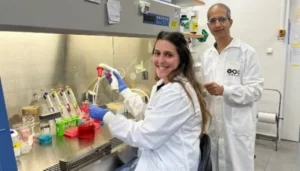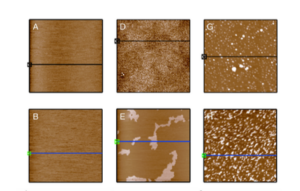L'Université de Haïfa veut cartographier l'horizon des événements au plus près des trous noirs. Commentaire du Dr David Elbaz du CEA

[:fr]
L’Université de Haïfa utilisera le télescope Hubble de renommée mondiale et mènera une campagne internationale d’observation spatiale et terrestre pour cartographier les environs des trous noirs afin de mieux comprendre comment ils accumulent de la matière et se développent sur le temps cosmique. Le Pr Doron Chelouche du Département de physique et du Centre de physique théorique et d’astrophysique de Haïfa de l’Université de Haïfa, a déclaré : « Ce sera l’une des campagnes de cartographie les plus précises et les plus étendues des environs immédiats des trous noirs supermassifs actifs à ce jour ».
L’Université de Haïfa mène ces travaux aux côtés de l’Université de Princeton, de l’Université de Göttingen, de la Ruhr University Bochum et de l’Université de Tel Aviv. Des centaines de groupes de recherche postulent pour utiliser le télescope spatial Hubble chaque année, car il s’agit de l’un des rares équipements capables de plonger dans les profondeurs de l’espace de manière aussi précise et avancée.
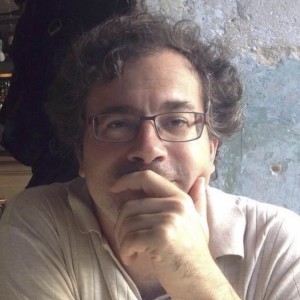
Mais seulement 10% environ du temps demandé est approuvé et accordé pour cet accès précieux aux capacités du télescope. L’équipe de recherche du Pr Chelouche examinera – pour la première fois en haute résolution – les rayonnements ultraviolets, optiques et infrarouges provenant des environs du trou noir supermassif dans la galaxie MRK 279, qui se trouve à plusieurs centaines de millions d’années-lumière de la Terre. Ce trou noir est actif, ce qui signifie qu’il est considéré comme accumulant de la matière de son environnement et qu’il croît rapidement. Selon la NASA, un trou noir est une « région de l’espace où la force d’attraction de la gravité est si forte que la lumière ne peut pas s’en échapper ».
La forte gravité se produit parce que la matière s’est effondrée dans un espace minuscule. Ce processus a lieu à la fin de la vie d’une étoile. Certains trous noirs sont le résultat d’étoiles mourantes, et pourtant le processus de formation des trous noirs supermassifs, hébergés au centre de la plupart, peut-être même de toutes les galaxies massives de l’univers, est actuellement incertain. Selon les modèles dominants, chaque trou noir actif qui accrète rapidement de la matière de son environnement proche est entouré d’un «disque d’accrétion » constitué de gaz à haute température qui tourne incroyablement vite et émet une forte lumière. Comprendre ces disques peut potentiellement élucider des questions clés sur la formation et l’évolution des trous noirs au cours du temps cosmique. Plus précisément, il peut nous dire à quelle vitesse les trous noirs se développent et comment ils affectent les galaxies dans lesquelles ils résident.
« Pendant le processus d’accrétion, le gaz chauffe à des températures élevées et ses propriétés peuvent être mesurées. En utilisant les capacités du télescope spatial Hubble qui fournira des mesures précises dans les sections ultraviolette, optique et infrarouge du spectre électromagnétique, nous pouvons obtenir une compréhension plus précise de la proximité immédiate du trou noir. Le télescope spatial Hubble est actuellement le seul appareil possédant la couverture spectrale et la résolution appropriées pour permettre une telle étude », ajoute le Pr Chelouche.
Ce projet fait suite à une étude antérieure menée par Doron Chelouche dans laquelle il a examiné le disque d’accrétion dans MRK 279 (quand une étoile se fait avaler par un trou noir, un disque d’accrétion se forme autour de ce trou noir) à l’aide d’observations au sol et où il a trouvé des preuves intéressantes suggérant que les modèles actuels de la structure des régions les plus proches des trous noirs actifs au centre des galaxies sont très incomplets.
Dans cette étude, les chercheurs espèrent se concentrer sur un matériau situé encore plus près de l’horizon des événements du trou noir, ce qui pourrait donner une image plus précise du comportement du disque d’accrétion et expliquer le comportement du matériau accrété. Le Pr Chelouche pense que l’expérience n’est pas seulement précieuse du point de vue de la science fondamentale et de son désir de comprendre comment l’univers fonctionne, mais il prédit qu’en savoir plus sur la façon dont les trous noirs interagissent avec leur environnement à grande échelle pourrait nous apprendre comment les galaxies, comme notre Voie lactée, se forme et comment les conditions nécessaires à l’émergence de la vie dans l’univers peuvent être maintenues.
« C’est la beauté de la science fondamentale en général et de l’astronomie en particulier », explique le Pr Chelouche. « Cela stimule l’innovation technologique dans de nombreuses disciplines et plates-formes et peut annoncer une révolution dans notre compréhension de notre place dans l’univers et ses lois régissant, un peu comme la physique quantique, qui a commencé comme science fondamentale et est aujourd’hui au cœur de notre monde numérique ».
L’Université de Haïfa est une université de niveau mondial dédiée à l’excellence académique et à la responsabilité sociale.
Traduit et adapté par Esther Amar pour Israël Science Info
————–
Le Dr David ELbaz*, directeur de recherche au CEA, membre du comité scientifique d’Israël Science Info, commente ce programme ambitieux :
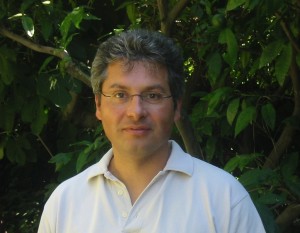
Nous venons de célébrer les 30 ans du télescope spatial Hubble et son successeur, le télescope spatial James Webb, s’apprête à compléter son regard en observant l’univers dans l’infrarouge, une partie invisible à Hubble. Hubble a révolutionné notre compréhension de l’univers en démontrant quelque chose de tout à fait surprenant et inattendu : de même qu’on ne trouve pas d’abricot sans noyau dans la nature, toutes les galaxies contiennent en leur centre un trou noir supermassif. Avant Hubble, on pensait que ces monstres étaient rares, qu’ils pouvaient expliquer les plus puissantes sources de lumière de l’univers, les quasars, grâce à leur puissante force gravitationnelle qui attire la matière qui chauffe et rayonne en tombant à l’intérieur. Mais avec Hubble, on a appris que les trous noirs étaient omniprésents et ce qui serait aujourd’hui le plus étonnant serait de trouver une galaxie sans noyau, sans trou noir galactique.
Quel est le rôle des trous noirs galactiques ? Participent-ils à la naissance, à la vie des galaxies ou bien, comme certains le proposent, à leur mort, lorsqu’elles deviennent stériles et ne forment plus de nouvelles étoiles ? Pour le comprendre, il faut observer le cœur bien caché des galaxies, là où la matière tourbillonne et pousse son dernier cri de lumière avant d’être engouffrée par le trou noir, dans ce qu’on appelle le « disque d’accrétion ». C’est véritablement le repas d’un trou noir en train de prendre de la masse que l’on observe, ce qui entre nourrit le trou noir, ce qui en sort affecte la galaxie et nous raconte l’histoire intime qui relie la galaxie avec son hôte puissant.
Comprendre ce lien est devenu l’un des principaux graals de l’astrophysique moderne et c’est à cette tâche que s’attaque cette collaboration en explorant l’événement qui s’est produit il y a plusieurs centaines de millions d’années, quand un trou noir dévorait la matière de la galaxie MRK 279, et dont la lumière ne nous arrive qu’aujourd’hui. En combinant les longueurs d’ondes, l’équipe pour voir différentes composantes de l’environnement du trou noir, et grâce aux infrarouges percer au plus près du trou noir. En 2022, quand le James Webb ouvrira les yeux sur l’univers depuis sa position à une distance de 1,5 million de kilomètres de la Terre, un nouvel outil s’offrira à la communauté scientifique pour aller encore plus loin dans cette exploration des limites de la connaissance et des lois de la physique, au plus près de cet être qui continue de défier nos lois fondamentales ».
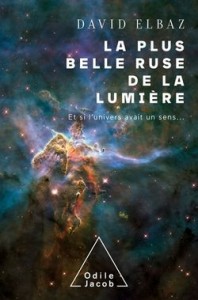 *David Elbaz, astrophysicien, est depuis début 2021 le directeur scientifique du département d’astrophysique du Commissariat à l’Energie Atomique (CEA Saclay) où il dirige le laboratoire Cosmologie et Evolution des Galaxies. Il est conseiller scientifique auprès de l’agence spatiale européenne pour la sélection de ses futures missions spatiales (ESA, AWG) et membre du Comité d’évaluation sur la recherche et l’exploration spatiales pour le centre national d’étude spatiales (CNES). Spécialisé dans l’étude de la formation des galaxies, David Elbaz est auteur/co-auteur de 261 publications dont 70 avec plus de 100 citations. Ses travaux sur la formation des galaxies ont été primés par le Prix Chrétien de la Société Américaine d’Astronomie (2000), il a reçu le prix Jaffé 2017 de l’Institut de France. Il enseigne un cours sur la formation des galaxies au master M2 Astronomie & d’Astrophysique de Paris. Il a reçu le Prix du livre Science & Philosophie 2017 de l’association X-Philo de l’école Polytechnique. Il a publié « A la recherche de l’univers invisible : matière noire, énergie noire, trous noirs », en 2016 aux Editions Odile Jacob. Il vient de publier « La plus belle ruse de la lumière – Et si l’univers avait un sens… » aux Editions Odile Jacob.
*David Elbaz, astrophysicien, est depuis début 2021 le directeur scientifique du département d’astrophysique du Commissariat à l’Energie Atomique (CEA Saclay) où il dirige le laboratoire Cosmologie et Evolution des Galaxies. Il est conseiller scientifique auprès de l’agence spatiale européenne pour la sélection de ses futures missions spatiales (ESA, AWG) et membre du Comité d’évaluation sur la recherche et l’exploration spatiales pour le centre national d’étude spatiales (CNES). Spécialisé dans l’étude de la formation des galaxies, David Elbaz est auteur/co-auteur de 261 publications dont 70 avec plus de 100 citations. Ses travaux sur la formation des galaxies ont été primés par le Prix Chrétien de la Société Américaine d’Astronomie (2000), il a reçu le prix Jaffé 2017 de l’Institut de France. Il enseigne un cours sur la formation des galaxies au master M2 Astronomie & d’Astrophysique de Paris. Il a reçu le Prix du livre Science & Philosophie 2017 de l’association X-Philo de l’école Polytechnique. Il a publié « A la recherche de l’univers invisible : matière noire, énergie noire, trous noirs », en 2016 aux Editions Odile Jacob. Il vient de publier « La plus belle ruse de la lumière – Et si l’univers avait un sens… » aux Editions Odile Jacob.
[:en]
Prof. Doron Chelouche at the Department of Physics and the Haifa Center for Theoretical Physics and Astrophysics at University of Haifa: “This will be among the most accurate and extensive mapping campaigns of the immediate environs of active supermassive black holes to date.”
Haifa, Israel, December 23, 2021 — University of Haifa will make use of the world-renowned Hubble Telescope and lead an international space – and ground – observational campaign to map out the vicinity of black holes to better understand how they accrete material and grow over cosmic time.
The University is conducting its research alongside Princeton University, University of Göttingen, Ruhr-University Bochum, and Tel Aviv University.
“This discovery will be among the most accurate and extensive mapping of the immediate environs of active supermassive black holes to date,” said lead researcher Prof. Doron Chelouche, professor at the Department of Physics and the Haifa Center for Theoretical Physics and Astrophysics at University of Haifa.
Hundreds of research groups apply to use the Hubble Space Telescope each year since it is one of the few pieces of equipment that can delve into the depths of space in such a precise and advanced manner. However, only some 10% of the time requested is approved and granted precious access to the telescope’s capabilities.
Prof. Chelouche’s research team will examine – for the first time with high-resolution – ultraviolet, optical, and infrared radiation from the environs of the supermassive black hole in the MRK 279 galaxy, which is several hundred million of light-years away from Earth. This black hole is active, which means that it is seen to be accreting material from its environment, and rapidly growing.
According to NASA, a black hole is a “region in space where the pulling force of gravity is so strong that light is not able to escape.” The strong gravity occurs because matter has collapsed into a tiny space. This process takes place at the end of a star’s life. Some black holes are a result of dying stars, and yet the formation path for supermassive black holes, which are harbored at the centers of most if not all massive galaxies in the universe, is currently uncertain.
According to prevailing models, every active black hole that rapidly accretes material from its surrounding environment is surrounded by an “accretion disk” which consists of high-temperature gas that rotates incredibly fast and emits strong light. Understanding these disks can potentially unlock key questions about black hole formation and evolution over cosmic time. Specifically, it can tell us how fast black holes grow, and how they affect the galaxies in which they reside.
“During the accretion process, gas heats up to high temperatures and its properties can be measured. Using Hubble Space Telescope’s abilities to provide accurate measurements at the ultraviolet, optical, and infrared sections of the electromagnetic spectrum, we can get a more precise understanding of the immediate vicinity of the black hole. The Hubble Space Telescope is currently the only device that has the appropriate spectral coverage and resolution to allow such a study,” Prof. Chelouche added.
This project follows an earlier study conducted by Prof. Chelouche where he examined the accretion disk in MRK 279 using ground observations and found tantalizing evidence suggesting that current models for the structure of the innermost regions of active black holes at the centers of galaxies are highly incomplete. In this current study, however, researchers hope to focus on material which is located even closer to the event horizon of the black hole that could yield a more accurate picture of the accretion disk’s behavior and shed light on the fate of the accreted material.
Prof. Chelouche believes the experiment is not only valuable from a basic science perspective and its desire to understand how the universe operates, but predicts that knowing more about how black holes interact with their large-scale environment could teach us about how galaxies, like our Milky Way galaxy, form and how the necessary conditions for the emergence of life in the universe may be sustained.
“This is the beauty of basic science in general, and of astronomy, in particular,” says Prof. Chelouche, “It drives supportive technological innovation across many disciplines and platforms and may herald a revolution in our understanding of our place in the universe and its governing laws, not unlike quantum physics, which started off as basic science and is nowadays at the operational core of our digital world.”
University of Haifa is a world-class university dedicated to academic excellence and social responsibility. The University expands educational opportunities and upward mobility for all members of society secures and stabilizes the north of the country, and serves as an example of tolerance and coexistence in Israel and the entire region.
[:]





